Honda e:Ny1 vs Toyota Proace City – Differences & prices compared
Compare performance, boot space, consumption and price in one view.
Find out now: which car is the better choice for you – Honda e:Ny1 or Toyota Proace City?
The Honda e:Ny1 (SUV) comes with a Electric engine and Automatic transmission. In comparison, the Toyota Proace City (High Roof Estate) features a Petrol, Diesel or Electric engine with Manuel or Automatic transmission.
When it comes to boot capacity, the Honda e:Ny1 offers 361 L, while the Toyota Proace City provides 912 L – depending on how much space you need. If you’re looking for more power, decide whether the 204 HP of the Honda e:Ny1 or the 136 HP of the Toyota Proace City suits your needs better.
In terms of consumption, the values are 18.20 kWh per 100 km for the Honda e:Ny1, and 18.10 kWh5.30 L for the Toyota Proace City.
Price-wise, the Honda e:Ny1 starts at 33400 £, while the Toyota Proace City is available from 20800 £. Compare all the details and find out which model fits your lifestyle best!
Honda e:Ny1
The Honda e:Ny1 embodies the brand's vision for a sustainable and stylish urban driving experience. With its distinctive design and advanced technology, it offers a glimpse into the future of electric mobility. Inside, the cabin showcases a minimalist yet functional aesthetic, providing comfort and connectivity for modern drivers.
details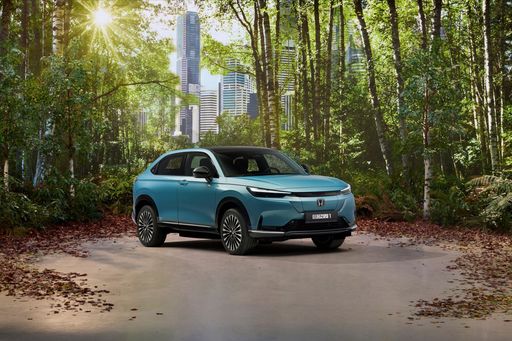 @ hondanews.eu
@ hondanews.eu
 @ hondanews.eu
@ hondanews.eu
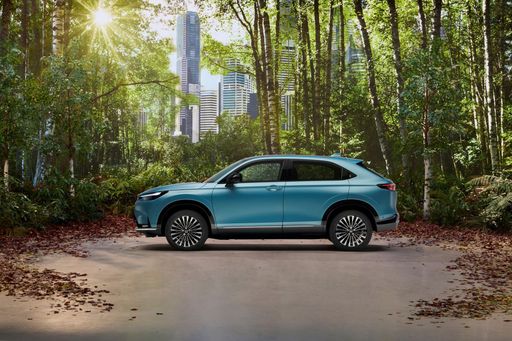 @ hondanews.eu
@ hondanews.eu
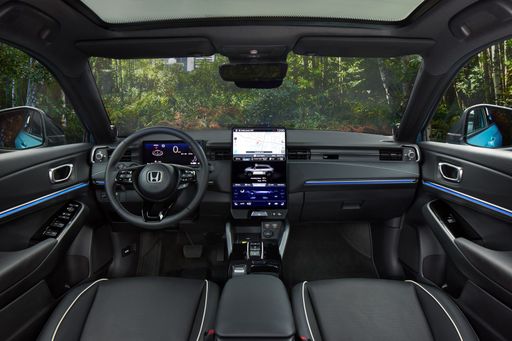 @ hondanews.eu
@ hondanews.eu
Toyota Proace City
The Toyota Proace City High Roof Combi is designed to seamlessly blend practicality with comfort, making it an ideal choice for families and businesses alike. Its versatile interior allows for flexible seating and cargo arrangements, catering to a variety of transport needs. Equipped with modern technology and advanced safety features, this vehicle ensures a reliable and secure driving experience.
details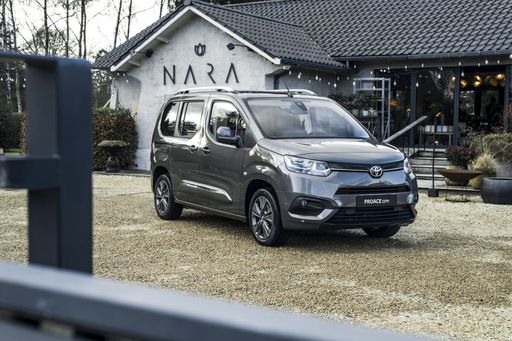 @ Toyota Deutschland
@ Toyota Deutschland
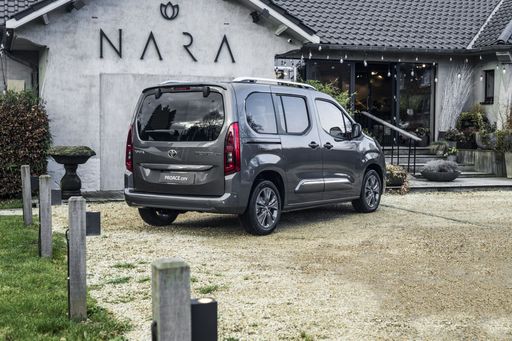 @ Toyota Deutschland
@ Toyota Deutschland
 @ Toyota Deutschland
@ Toyota Deutschland
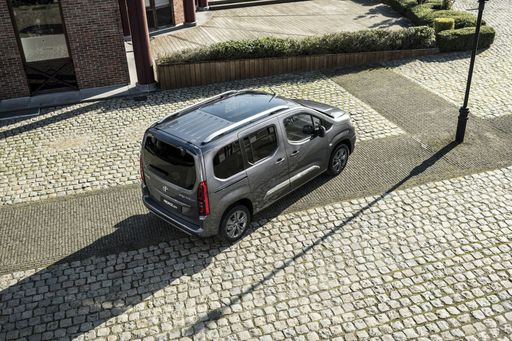 @ Toyota Deutschland
@ Toyota Deutschland
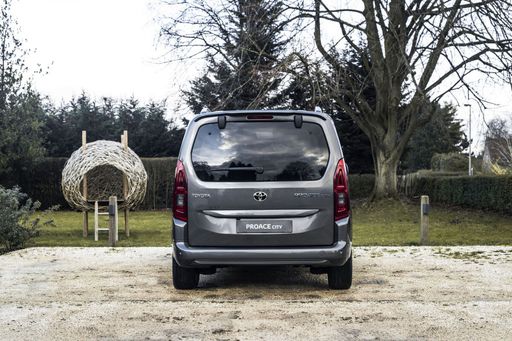 @ Toyota Deutschland
@ Toyota Deutschland
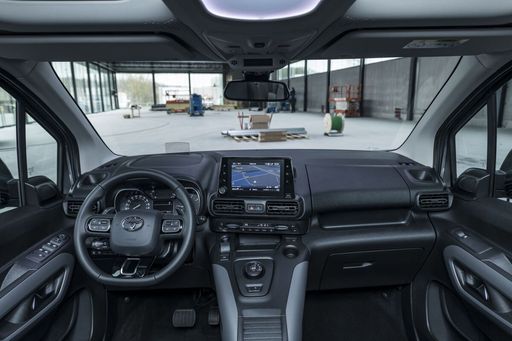 @ Toyota Deutschland
@ Toyota Deutschland

|

|
|
|
|
Costs and Consumption |
|
|---|---|
|
Price
33400 - 36000 £
|
Price
20800 - 42100 £
|
|
Consumption L/100km
-
|
Consumption L/100km
5.3 - 6.3 L
|
|
Consumption kWh/100km
18.20 kWh
|
Consumption kWh/100km
18.10 kWh
|
|
Electric Range
412 km
|
Electric Range
343 km
|
|
Battery Capacity
-
|
Battery Capacity
-
|
|
co2
0 g/km
|
co2
0 - 146 g/km
|
|
Fuel tank capacity
-
|
Fuel tank capacity
50 - 61 L
|
Dimensions and Body |
|
|---|---|
|
Body Type
SUV
|
Body Type
High Roof Estate
|
|
Seats
5
|
Seats
5 - 7
|
|
Doors
5
|
Doors
4 - 5
|
|
Curb weight
1730 kg
|
Curb weight
1366 - 1664 kg
|
|
Trunk capacity
344 - 361 L
|
Trunk capacity
322 - 912 L
|
|
Length
4387 mm
|
Length
4401 - 4751 mm
|
|
Width
1790 mm
|
Width
1848 mm
|
|
Height
1584 mm
|
Height
1812 - 1818 mm
|
|
Payload
350 kg
|
Payload
525 - 869 kg
|
Engine and Performance |
|
|---|---|
|
Engine Type
Electric
|
Engine Type
Petrol, Diesel, Electric
|
|
Transmission
Automatic
|
Transmission
Manuel, Automatic
|
|
Transmission Detail
-
|
Transmission Detail
Manual Gearbox, Automatic Gearbox
|
|
Drive Type
Front-Wheel Drive
|
Drive Type
Front-Wheel Drive
|
|
Power HP
204 HP
|
Power HP
102 - 136 HP
|
|
Acceleration 0-100km/h
7.60 s
|
Acceleration 0-100km/h
11.5 - 13.2 s
|
|
Max Speed
160 km/h
|
Max Speed
135 - 186 km/h
|
|
Torque
310 Nm
|
Torque
205 - 300 Nm
|
|
Number of Cylinders
-
|
Number of Cylinders
3 - 4
|
|
Power kW
150 kW
|
Power kW
75 - 100 kW
|
|
Engine capacity
-
|
Engine capacity
1199 - 1499 cm3
|
General |
|
|---|---|
|
Model Year
2023
|
Model Year
2024 - 2025
|
|
CO2 Efficiency Class
A
|
CO2 Efficiency Class
E, A
|
|
Brand
Honda
|
Brand
Toyota
|
Honda e:Ny1
A Glimpse into the Future: The Honda e:Ny1
The automotive industry is no stranger to innovation, and Honda continues to spearhead this movement with its all-electric Honda e:Ny1 SUV. This vehicle represents the brand's commitment to energy efficiency, modern design, and cutting-edge technology, offering a remarkable driving experience that sets a new standard in the electric vehicle (EV) market.
Performance and Powertrain
At the heart of the Honda e:Ny1 is a robust electric motor that delivers an impressive 204 PS, equivalent to 150 kW, ensuring a dynamic and responsive driving experience. The vehicle can accelerate from 0 to 100 km/h in a brisk 7.6 seconds, making it one of the more swift options among electric SUVs. Thanks to a finely tuned reduction gearbox, the Honda e:Ny1 achieves a maximum speed of 160 km/h.
Efficiency Meets Range
The Honda e:Ny1 excels in energy efficiency, with a consumption rate of 18.2 kWh per 100 km. Even more impressively, it offers a substantial electric range of 412 km on a single charge, allowing drivers to confidently tackle longer journeys without frequent stops for recharging. Emphasising sustainability, the vehicle proudly holds a CO2 efficiency class of 'A', with zero emissions, further establishing its place in the realm of eco-friendly transportation.
Innovative Design and Comfort
Honda's design philosophy shines through in the e:Ny1, combining sleek aesthetics with practical features. Boasting a body length of 4,387 mm, a width of 1,790 mm, and a height of 1,584 mm, the SUV provides a spacious interior that comfortably seats five passengers. The design also incorporates a flexible boot space of 344 to 361 litres, accommodating various cargo needs.
Comfort is at the forefront of the e:Ny1's design, enhanced by standard features found in its Advance Package. These amenities are strategically designed to ensure a pleasant driving experience, be it through enhanced seating ergonomics or advanced climate control.
Technological Advancements
The Honda e:Ny1 is laden with technological innovations that are intuitive and user-friendly. From an advanced infotainment system to driver assistance features that ensure safety and ease, the SUV integrates technology seamlessly into the driving experience. This vehicle is equipped to meet modern connectivity needs, incorporating interfaces that are compatible with a range of digital platforms.
Investment Value and Running Costs
With a price range between €38,990 and €41,990, the Honda e:Ny1 represents a valuable investment for those looking towards electric mobility. Monthly running costs range from €1,125 to €1,171, with cost per kilometre between €0.45 and €0.469, reflecting its efficiency and low operational expenses.
Conclusion: Leading the Charge
The Honda e:Ny1 SUV encapsulates a perfected blend of power, efficiency, and style. With its impressive range, cutting-edge technology, and comfortable design, it stands as a tantalising choice for anyone considering the leap to electric vehicles. As Honda drives forward into the new era of automotive innovation, the e:Ny1 marks a significant milestone on the road to sustainable transport solutions.
Toyota Proace City
The Versatile Toyota Proace City: A Gamechanger in the Van Segment
In the bustling world of automotive innovations, the Toyota Proace City stands out as a versatile, high-roof van that combines practicality with cutting-edge technology. Designed to cater to the needs of businesses and families alike, the Proace City makes a compelling case for itself with various powertrain options, impressive load capacity, and modern amenities. Let’s dive into the technical details and innovations that make this model a standout choice.
Powertrain Variety: Meeting Diverse Needs
The Toyota Proace City offers a diverse range of powertrains to meet different driving needs and preferences. Whether you're looking for the traditional power of internal combustion engines or the modern efficiency of electric propulsion, the Proace City has got you covered. The petrol options include a 1.2 Turbo engine, producing 110 PS with a consumption rate of 6.3 L/100km. For diesel enthusiasts, a robust 1.5 D-4D Diesel engine is available, offering power outputs up to 130 PS and a consumption as low as 5.3 L/100km. Moreover, the electric versions pack a 50 kWh battery that delivers 136 PS with an efficient consumption rate of 19.4 kWh/100km, providing an impressive range of up to 284 km.
Technological Advancements and Efficiency
Innovation in the Toyota Proace City extends beyond its engines. It boasts an impressive array of technologies aimed at enhancing efficiency and safety. The CO2 efficiency classes range from A to E depending on the model, with emissions that meet Euro 6 standards, reflecting Toyota’s commitment to sustainability. The integration of various automatic and manual transmission options provides drivers with flexibility and control, ensuring a smooth and efficient driving experience.
Comfort and Practicality: Inside the Proace City
Step inside the Toyota Proace City, and you are greeted with a spacious and well-appointed interior. Depending on the configuration, the van offers seating for five to seven passengers, making it ideal for both family use and commercial applications. The boot capacity ranges from 322 to 912 litres, ensuring ample space for all your cargo needs. With maximum payloads of up to 869 kg, the Proace City is designed to handle heavy-duty tasks without compromising on passenger comfort.
A Design for Every Purpose
The Toyota Proace City spans a length between 4401 mm and 4751 mm, providing a substantial yet manageable vehicle size. The consistent width of 1848 mm and height reaching up to 1818 mm offer a solid road presence while ensuring maneuverability in urban settings. The notable variant selection includes designations like Club, Comfort, Flow, and Team Deutschland, each with optional automatic configurations to match different lifestyle and business demands.
Affordability and Operational Costs
With a starting price range from €24,835 to €51,245, the Toyota Proace City provides an accessible entry into the segment of high-roof vans. Its economical efficiency extends to operational costs, with monthly expenses ranging from €1,071 to €1,181, showcasing financial viability for both private owners and fleet operators alike.
Conclusion
The Toyota Proace City stands as a formidable contender in the van market, offering a blend of flexibility, efficiency, and modern technology. Its range of powertrains, spacious interior, and low operating costs make it a practical choice for anyone from urban professionals to family adventurers. Whether it's for work or leisure, the Proace City proves that a utility vehicle can be both functional and sophisticated.
The prices and data displayed are estimates based on German list prices and may vary by country. This information is not legally binding.
